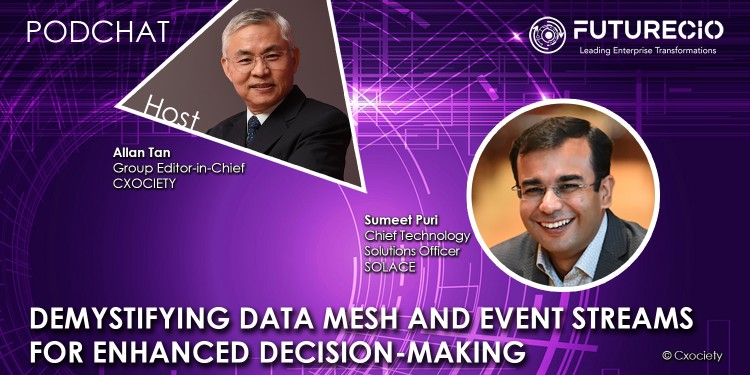Effective decision making in today’s complex and disrupted business environments must be connected, contextual and continuous to drive good outcomes.
For the most part, the discussions we often hear when it comes to data is around the use of analytic tools or artificial intelligence. But I argue that there is fundamentally a more pressing issue around data before you get to the point of talking about analytics.
We need access to data in real-time. Most businesses are complex networks of interdependent and independent operations that see only a piece of the data and they are happy with that. Leadership isn’t, of course, because as far as the CEO or CFO is concerned, the only way to make an accurate decision is if they have access to clean data in real-time.
So how do I make the right data accessible to the person that needs it the most at the time he or she needs it? Do I need to bring together all the data into one physical location, and does that make sense?
Getting accurate real-time data in this era of microservices is the holy grail for companies that handle vast volumes of transactions simultaneously. But this is only one piece of the puzzle in today’s fast-paced digital business environments.
According to Sumeet Puri, chief technology solutions officer at Solace, companies need to adopt an event-driven architecture (EDA) where data from decoupled applications can be routed to be used for services as varied as order management, bills payment and supply chain monitoring to name a few.
What is EDA
“EDA has been around for a while but has started to gain popularity over the past few years in the enterprise as systems become more and more connected and more and more real-time. If I explain it in common speak, any occurrence that happens is an event.
So, if I talked about credit cards. A credit card swipe is an event, when you pay your bill to your telco that bill payment is an event. Any order that you place is an event. A ship moving, the wheel of a car rotating - those are very high-volume events. Foreign exchange rates changing are all market data related events,” explained Puri.
EDA is a software architecture – a framework that orchestrates behaviour around the production, detection and consumption of events as well as the responses they evoke. An event is any identifiable occurrence that has significance for system hardware or software. In this instance, data is an event.
“Rather than having a service-oriented architecture, which is very good while it lasted. In today's enterprise – where the network is faster, we can leverage this improvement in the network and have our business logic applications loosely coupled, agile, plug and play, so that they just listen to the events that are happening, do their thing, publish events, and then the next component listens to these events,” said Puri.
That way, he went on, “you can go into the cloud and after that, you can get a more responsive or more agile architecture - which is again easier to innovate with.”
Enhancing customer experience
Puri spoke exclusively with FutureCIO to explain how EDA works and the benefits of real-time event stream in enhancing an enterprise’s delivery of their customer experience.
From a business perspective, having an event-driven architecture enable enterprises to solve problems more responsively.
“Your customer experience improves significantly in many cases when you build your applications in an event-driven manner. You have agility for a faster time to market because it's much more plug and play. You can add new components easily, so your overall application agility improves. As a result, your ability to innovate faster improves,” Puri said, adding that companies can deploy a cloud or IoT technologies and these can be plugged into the mesh without disturbing anything else.
He added: “When your responsiveness improves as well as your agility improves, usually your cost also goes down.”
Building systems the way nature works
Puri noted that building applications designed to respond to event triggers are ideal for the delivery of today’s digital services.
“Event-driven is the way that nature works. See when it rains, it's an event. When it rains, you open the umbrella and, you put your clothes inside. We are all reacting to an event That's the way of nature. So, it's natural to build applications that way, but we all grew up on request-reply or batch-based transactions because that is how the systems were evolving in the early days,” he said.
“I think people have to leap to unlearn the request supply flows and understand that if data quality is good, it will give you better performance. It'll give you better responsiveness,” Puri said.
Click on the PodChat player and listen to Puri elaborate on the developments around event-driven architecture, data mesh versus event mesh, and the business value that be derived from event-driven architecture and event mesh.





